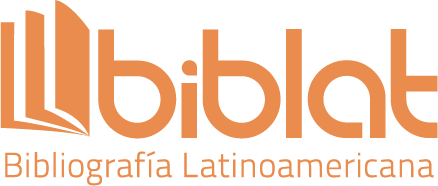CRISPR / CAS: the future of gene editing
Keywords:
CRISPR/Cas, Genomic editing tool, Gene therapy, Antiviral treatmentAbstract
Since the project of the human genome and the subsequent publication of the sequence of more than 20,000 genes that comprise it, the study of the genomes of many organisms and their editing have been a trend since then, being proposed and discovered new tools that allow the editing of DNA. CRISPR/Cas system whose natural function is a defense of bacteria against viral infections, ended up being a breakthrough in the field of genomic sciences, allowing genomic editing at a level of precision greater than the techniques that preceded it. The applications of this system that has been emphasized in recent years, are gene therapy and the Development of alternative antiviral treatments. Despite the advances of CRISPR/Cas, it is still required to increase its specificity to eliminate the appearance of mutations outside the target gene.
Downloads
References
S. Freeman, “Fundamentos de biología,” Catálogo Universitario y Profesional 2018, p. 28, 2010.
D. D. de Tancredi, “El concepto de gen y cromosoma, conocimiento estructurante de la Biología. Algunas aportaciones desde la investigación en enseñanza de las ciencias,” Revista de investigación, no. 59, pp. 189-220, 2006.
F. B. Churchill, “William Johannsen and the genotype concept,” Journal of the History of Biology, vol. 7, no. 1, pp. 5-30, 1974.
A. D. Hershey and M. Chase, “Independent functions of viral protein and nucleic acid in growth of bacteriophage,” The Journal of general physiology, vol. 36, no. 1, pp. 39-56, 1952.
S. Arnott, “Historical article: DNA polymorphism and the early history of the double helix,” Trends in biochemical sciences, vol. 31, no. 6, pp. 349-354, 2006.
J. Watson, The double helix. Hachette UK, 2012.
J. García et al., “Estrategias de obtención de proteínas recombinantes en Escherichia coli,” VacciMonitor, vol. 22, no. 2, pp. 30-39, 2013.
S. Khan et al., “Role of recombinant DNA technology to improve life,” International journal of genomics, vol. 2016, 2016.
K. Au - Hansen, M. J. Au - Coussens, J. Au - Sago, S. Au - Subramanian, M. Au - Gjoka, and D. Au - Briner, “Genome Editing with CompoZr Custom Zinc Finger Nucleases (ZFNs),” JoVE, no. 64, p. e3304, 2012/06/14/ 2012, doi: doi:10.3791/3304.
P. D. Hsu, E. S. Lander, and F. Zhang, “Development and applications of CRISPR-Cas9 for genome engineering,” Cell, vol. 157, no. 6, pp. 1262-1278, 2014.
Y. Ishino, H. Shinagawa, K. Makino, M. Amemura, and A. Nakata, “Nucleotide sequence of the iap gene, responsible for alkaline phosphatase isozyme conversion in Escherichia coli, and identification of the gene product,” Journal of bacteriology, vol. 169, no. 12, pp. 5429-5433, 1987.
P. Horvath and R. Barrangou, “CRISPR/Cas, the immune system of bacteria and archaea,” Science, vol. 327, no. 5962, pp. 167-170, 2010.
K. S. Makarova, N. V. Grishin, S. A. Shabalina, Y. I. Wolf, and E. V. Koonin, “A putative RNA-interference-based immune system in prokaryotes: computational analysis of the predicted enzymatic machinery, functional analogies with eukaryotic RNAi, and hypothetical mechanisms of action,” Biology direct, vol. 1, no. 1, p. 7, 2006.
R. Barrangou et al., “CRISPR provides acquired resistance against viruses in prokaryotes,” Science, vol. 315, no. 5819, pp. 1709-1712, 2007.
E. Deltcheva et al., “CRISPR RNA maturation by trans-encoded small RNA and host factor RNase III,” Nature, vol. 471, no. 7340, p. 602, 2011.
M. F. Lammoglia-Cobo, R. Lozano-Reyes, C. Daniel, R. B. Muñoz-Soto, and C. López-Camacho, “La revolución en ingeniería genética: sistema CRISPR/Cas,” Investigación en Discapacidad, vol. 5, no. 2, pp. 116-28, 2016.
L. E. Giono, “CRISPR/CAS9 Y LA TERAPIA GÉNICA,” CRISPR/Cas9 and gene therapy., Article vol. 77, no. 5, pp. 405-409, 09// 2017.
Y. H. Díaz and A. A. M. López, “Transformación Genética de Eucariotas,” Kuxulkab’, vol. 18, no. 35, 2014.
J. M. Torres, “Terapia génica:¿ Por qué perseverar?,” Ludus Vitalis, vol. 16, no. 29, pp. 203-206, 2016.
J. G. Jansen, A. Tsaalbi-Shtylik, and N. de Wind, “Roles of mutagenic translesion synthesis in mammalian genome stability, health and disease,” DNA repair, vol. 29, pp. 56-64, 2015.
I.-R. M. Russo et al., “‘Intentional Genetic Manipulation’ as a conservation threat,” Conservation Genetics Resources, vol. 11, no. 2, pp. 237-247, 2019/06/01 2019, doi: 10.1007/s12686-018-0983-6.
Y. Feng et al., “Targeting Cdk11 in osteosarcoma cells using the CRISPR‐cas9 system,” Journal of orthopaedic research, vol. 33, no. 2, pp. 199-207, 2015.
C. Long, J. R. McAnally, J. M. Shelton, A. A. Mireault, R. Bassel-Duby, and E. N. Olson, “Prevention of muscular dystrophy in mice by CRISPR/Cas9–mediated editing of germline DNA,” Science, vol. 345, no. 6201, pp. 1184-1188, 2014.
G. Schwank et al., “Functional repair of CFTR by CRISPR/Cas9 in intestinal stem cell organoids of cystic fibrosis patients,” Cell stem cell, vol. 13, no. 6, pp. 653-658, 2013.
W. L. Chew et al., “A multifunctional AAV-CRISPR-Cas9 and its host response,” (in eng), Nat Methods, vol. 13, no. 10, pp. 868-74, Oct 2016, doi: 10.1038/nmeth.3993.
R. Kaminski et al., “Elimination of HIV-1 genomes from human T-lymphoid cells by CRISPR/Cas9 gene editing,” Scientific reports, vol. 6, p. 22555, 2016.
L. Ye et al., “Seamless modification of wild-type induced pluripotent stem cells to the natural CCR5Δ32 mutation confers resistance to HIV infection,” Proceedings of the National Academy of Sciences, vol. 111, no. 26, pp. 9591-9596, 2014.
V. Ramanan et al., “CRISPR/Cas9 cleavage of viral DNA efficiently suppresses hepatitis B virus,” Scientific reports, vol. 5, p. 10833, 2015.
Downloads
Published
How to Cite
Issue
Section
License

This work is licensed under a Creative Commons Attribution-NonCommercial-NoDerivatives 4.0 International License.
The magazine acquires the patrimonial rights of the articles only for diffusion without any purpose of profit, without diminishing the own rights of authorship.
The authors are the legitimate owners of the intellectual property rights of their respective articles, and in such quality, by sending their texts they express their desire to collaborate with the Epistemus Magazine, published biannually by the University of Sonora.
Therefore, freely, voluntarily and free of charge, once accepted the article for publication, they give their rights to the University of Sonora for the University of Sonora to edit, publish, distribute and make available through intranets, Internet or CD said work, without any limitation of form or time, as long as it is non-profit and with the express obligation to respect and mention the credit that corresponds to the authors in any use that is made of it.
It is understood that this authorization is not an assignment or transmission of any of your economic rights in favor of the said institution. The University of Sonora guarantees the right to reproduce the contribution by any means in which you are the author, subject to the credit being granted corresponding to the original publication of the contribution in Epistemus.
Unless otherwise indicated, all the contents of the electronic edition are distributed under a license for use and Creative Commons — Attribution-NonCommercial-ShareAlike 4.0 International — (CC BY-NC-SA 4.0) You can consult here the informative version and the legal text of the license. This circumstance must be expressly stated in this way when necessary.
The names and email addresses entered in this journal will be used exclusively for the purposes established in it and will not be provided to third parties or for their use for other purposes.





























